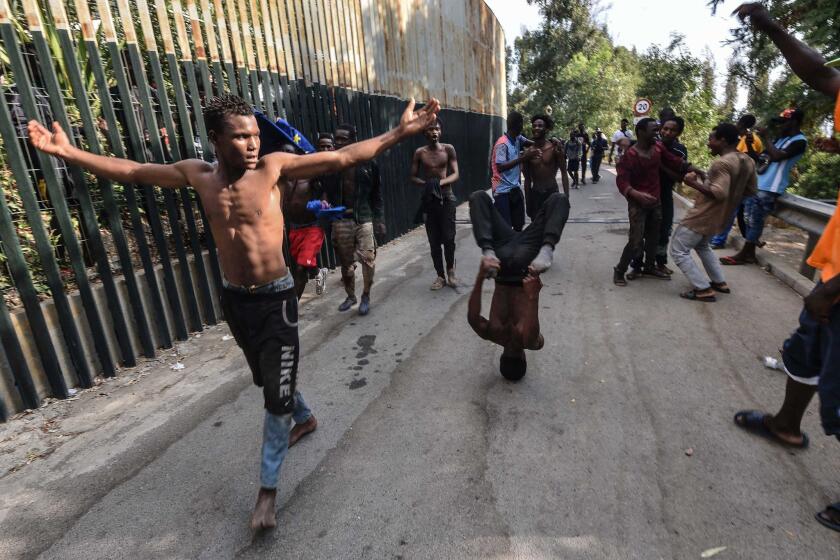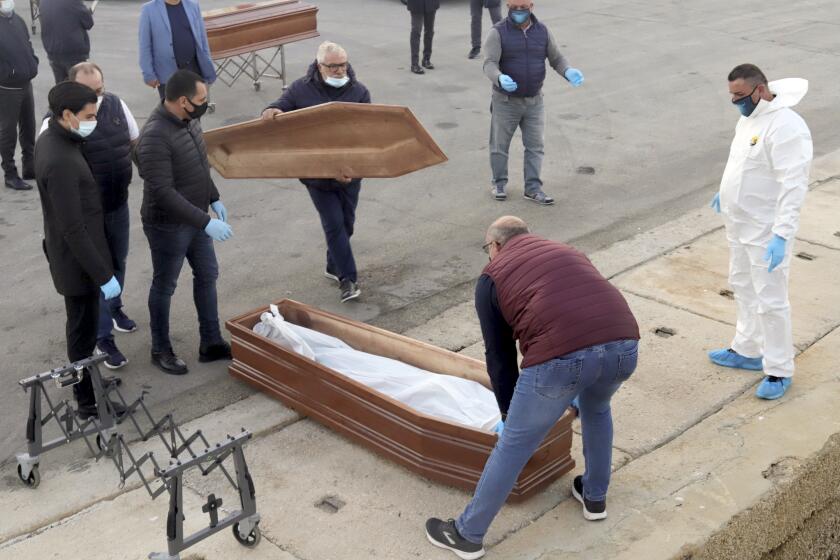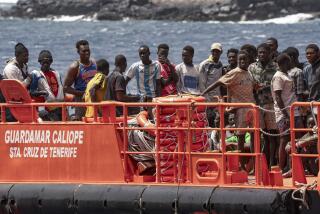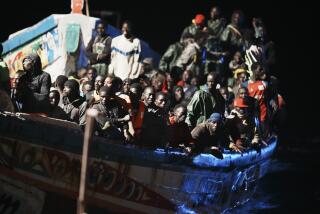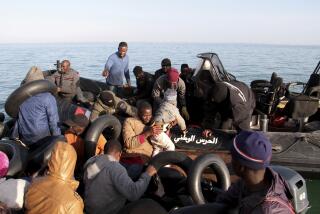Why are thousands of migrants suddenly crossing into Spain from North Africa?
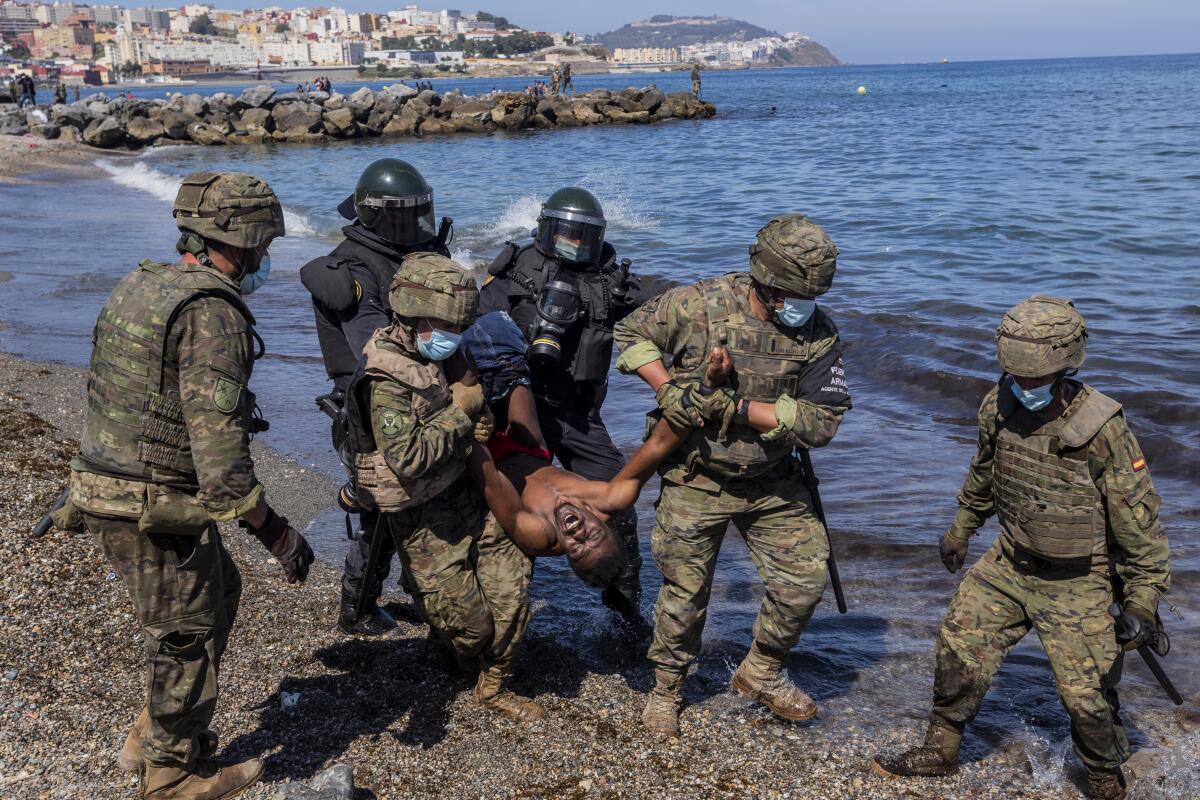
About 8,000 people have streamed into the Spanish city of Ceuta from Morocco in the past two days, most of them swimming around breakwaters and across the border to reach the Spanish enclave in North Africa.
The unprecedented surge has strained relations between Morocco and Spain, with Spanish Prime Minister Pedro SĂĄnchez canceling a trip to Paris to make an unscheduled visit to Ceuta, where Spain has deployed military reinforcements and police along the border. Hereâs a look at whatâs going on:
Where is Ceuta?
Ceuta is a coastal city in North Africa that has belonged to Spain since the 16th century. Like Melilla, another Spanish possession on the Moroccan coast, Ceuta in recent decades has become a flashpoint for migrants from Morocco and sub-Saharan Africa seeking to enter Europe.
Last year, about 2,200 people crossed into Ceuta and Melilla by scaling border fences or swimming from the Moroccan side. Ceuta has a population of 85,000 and is connected to mainland Spain by ferry services across the narrow Strait of Gibraltar.
Late last August, 300 sub-Saharan migrants ran from the hills above this small Spanish enclave on the northern coast of Africa and stormed the 20-foot-high barbed-wire fence separating Spain from Morocco.
What is happening in Ceuta?
Migrants regularly make it across the border in small numbers, but the scale of the crossings this week is exceptional. Thousands of people were able to reach the border area without being stopped by Moroccan authorities.
About 8,000 people, including 2,000 believed to be minors, reached Ceuta in the past two days by swimming or paddling in small boats around breakwaters separating the two countries. Spain deployed troops and armored vehicles to the border Tuesday, rounding up migrants on a beach and sending many of them back to Morocco through a gate in the border fence. The Red Cross says one young man died and dozens were treated for hypothermia.
What is behind the surge?
Morocco has said little about why it relaxed the border controls. Many suspect it to be retaliation against Spain for having allowed the leader of a militant group, Brahim Ghali, to receive medical treatment in a Spanish hospital. Two Moroccan officials made that link explicit in public comments Wednesday.
Ghali heads the Polisario Front, which is fighting for an independent Western Sahara, a former Spanish colony that Morocco annexed in the 1970s. He was hospitalized in the Spanish city of Logrono last month in a move that angered Moroccoâs government, which warned there would be âconsequences.â
Some experts say that the issue goes beyond Ghali and that Morocco wants Spain to support Moroccoâs sovereignty over Western Sahara, as the U.S. did under the Trump administration last year.
The number of migrants and asylum-seekers who reached Europe in 2020 is the lowest of the last decade, but many died trying.
What happens to the migrants now?
Spainâs Interior Ministry said about half of those who made it across have already been sent back to Morocco. Under a three-decade-old agreement between the two countries, Spanish authorities can return adults who cross the border irregularly.
On Tuesday, Spanish soldiers could be seen directing migrants toward a border gate, in some cases hitting them with batons to make them hurry up. An Associated Press reporter saw several children among those being pushed back, even though the Spanish government claimed that no unaccompanied minors were being returned. Many of the unaccompanied minors were being held in quarantine in warehouse shelters run by the Red Cross.
What are the wider implications for Spain?
The developments in Ceuta have become one of the biggest crises in relations between Spain and Morocco since 2002, when a territorial dispute erupted over an uninhabited island off the Moroccan coast. The situation represents a humanitarian, diplomatic and political challenge for SĂĄnchezâs government.
News Alerts
Get breaking news, investigations, analysis and more signature journalism from the Los Angeles Times in your inbox.
You may occasionally receive promotional content from the Los Angeles Times.
In recent years, Spain has seen spikes in migrant arrivals on its southern coast as well as in the Canary Islands, sparking concerns over migration that have helped fuel the rise of Vox, a far-right party that entered parliament in 2019. Vox was quick to blame the situation in Ceuta on the governmentâs âinaction,â and the partyâs leader visited the city on Tuesday.
How does this affect migration across Europe?
Other European Union nations are watching the developments in Ceuta carefully because Spainâs border with Morocco is also the EUâs external border. Since Europeâs migrant crisis in 2015, the bloc has tried to reduce the flow of irregular migrants to Europe in part by seeking agreements with transit countries â including Morocco, Turkey and Libya â to hold back migrants.
The situation in Ceuta and a similar crisis on Turkeyâs land border with Greece last year show how such deals can give transit countries plenty of leverage in the 27-nation EU. Its commissioner for home affairs, Ylva Johansson, called the Ceuta situation âworryingâ and urged Morocco to prevent more people from crossing over irregularly.
More to Read
Sign up for Essential California
The most important California stories and recommendations in your inbox every morning.
You may occasionally receive promotional content from the Los Angeles Times.
